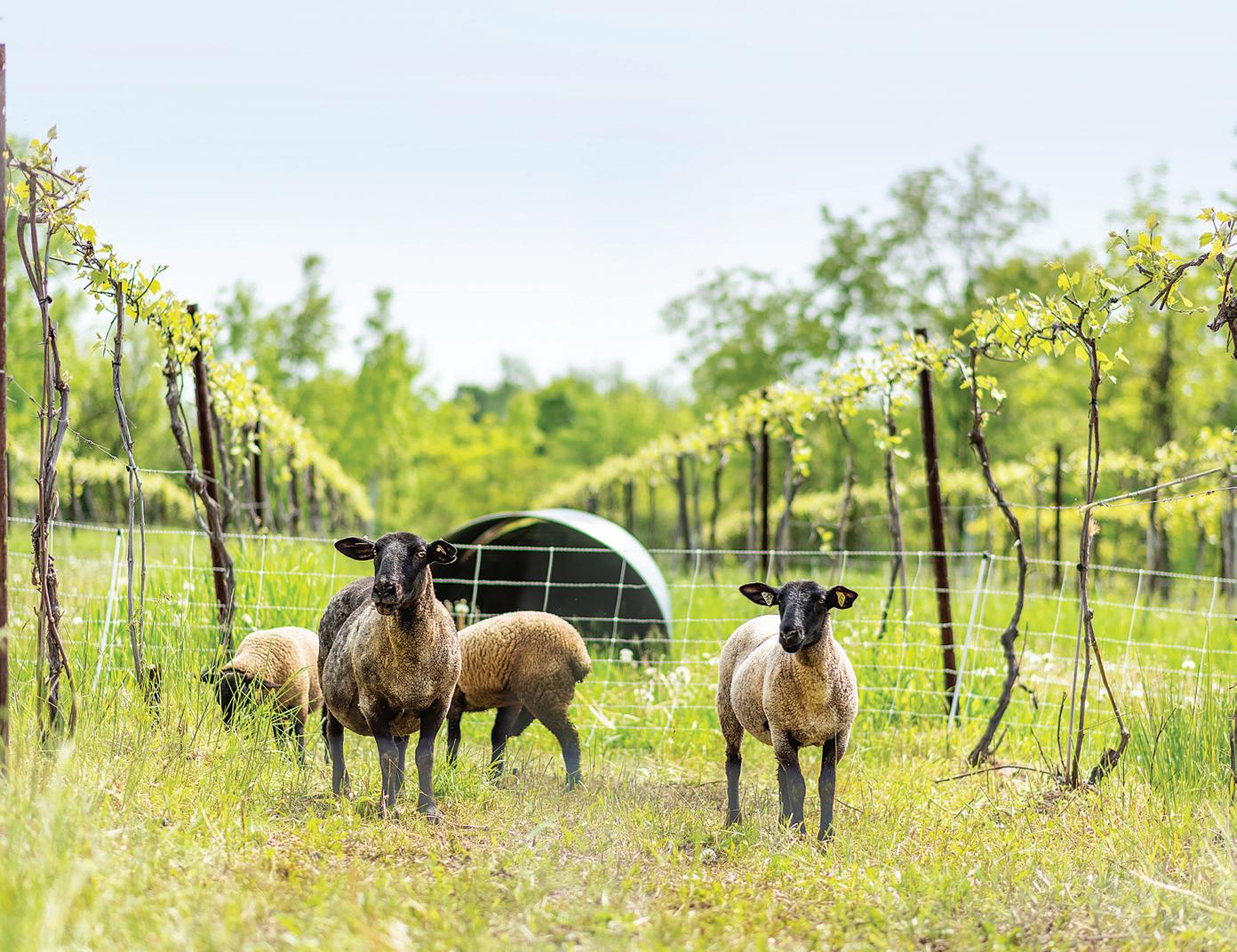
10 minute read
KING OF PROVERBS
BILLINGS LIBRARY IS A FITTING HOME FOR THE RESEARCH COLLECTION AND SCHOLARLY LEGACY OF WOLFGANG MIEDER
BY JEFFREY WAKEFIELD
Advertisement
OF ALL PEOPLE, Wolfgang Mieder would seem to deserve the peace of mind that comes from hard work and goals accomplished.
Over his nearly half century at UVM, the gregarious German professor has written or edited well over two hundred books and published more than five hundred articles on proverbs, his academic specialty. For decades, he’s produced Proverbium, a massive annual of proverb criticism. He’s given hundreds of talks in two dozen countries and been honored with no fewer than six festschriftenn, collections of essays written by scholars commemorating a fellow expert.
But for a good decade, Mieder has been troubled.
The source of his worry? A bulging addition to his home, the largest room in the house, that held—in floor-to-ceiling shelves covering all four walls—the massive array of proverb collections and proverb studies he had accumulated across five decades.
It wasn’t the strain on the domestic infrastructure caused by his habit of adding one hundred new books a year that was making him anxious; it was what would happen to all those volumes in the future. Mieder turned seventy-five this year.
That would be a significant loss, and not just for sentimental reasons. In the last few years, proverb scholars from around the world have trooped to Mieder’s home in Williston to access his proverb collections in twenty-plus languages and dip into studies with titles like The Adages of Erasmus and “Right Makes Might”: Proverbs and the American Worldview, Mieder’s latest.
The logical way to preserve such a treasure would be to transfer it to the special collections department of a university. But time and again, at universities abroad and in the United States, including UVM, Mieder heard the same story—his collection was too much of a good thing.
No one had the space. –If a bulging book collection in serious need of a home is the end phase of a celebrated scholarly career, how did things begin?
After earning a PhD from Michigan State University in German literature in 1970, Mieder thought he’d be content to live the life of a traditional German professor. “I love teaching German and always have,” he says. But after joining UVM’s German and Russian Department the next year, he began to expand his horizon.
“I thought my career could be broader and more international if I used my language skills”—he speaks three languages fluently and can get by in another half dozen— and brought them to bear on what was becoming a scholarly specialty, proverbs, the subject of his PhD dissertation and of several papers he’d published in German.
His CV shows that Mieder leapt into the life of proverb scholarship with a vengeance. By his mid-twenties, he had already published several books, in English as well as German, and numerous articles on his specialty.
It helped that Mieder found proverbs—which he defines as distilled generalizations and observations of human behavior and experiences expressed so concisely they are easily repeated—to be endlessly fascinating.
For starters, they span the history of human civilization, he will tell you. The first recorded proverbs—including Big fish eat little fish and One hand washes the other—were etched in cuneiform on Sumerian tablets about 2500 B.C.E.
Antiquity was a golden age for proverbs, giving rise to many gems still in use today, from Times flies to Many hands make light work.
“Then there are the ones that all of us like so very much that got their start in medieval Latin and were translated to other languages,” Mieder says, like Strike while the iron is hot or When the cat’s away, the mice will play.
Humans have been spouting proverbs since time immemorial for several reasons, Mieder says. Importantly, they lend an air of authority.
One things proverbs don’t represent, Mieder says, is absolute truth. The proof? They often contradict one another.
The most famous pair of contradictory proverbs, Mieder says, is Out of sight, out of mind and Absence makes the heart grow fonder.
“We pick the proverb that fits a particular case,” he says. “If a relationship a young daughter or young son is in breaks up, what should the mother or father say to console the youngster? You might say, Out of sight, out of mind, or you could say, Absence makes the heart grow fonder. It all depends what message you want to send.”
One of Mieder’s favorite areas of inquiry is what he calls
SIMON BONNER PROFESSOR EMERITUS PENNSYLVANIA STATE UNIVERSTIY
the “anti-proverb,” a term he coined that has become so useful to proverb scholars, it now merits its own Wikipedia entry. “Proverbs can be played with,” he explains, so their meaning is subverted or changed entirely. Advertising copywriters have long made great use of this technique, often for comic effect.
But there are more serious uses of anti-proverbs, too. “We all know the proverb, Nobody is perfect; we’ve said it a thousand times,” Mieder says.
“But if you just take the word nobody and split it, you all of a sudden have No body is perfect. And that is, of course, a completely different meaning,” one that has been adopted by feminists, among others.
Contemporary proverb scholarship includes examining the increasing influence of American proverbs spinning out worldwide on the wings of pop culture and modern media. Mieder counts There’s no such thing as a free lunch and Garbage in, garbage out as distinctly American proverbial wisdom. He finds that development “exciting,” not because he is a cultural imperialist, “but because you can now study the dissemination of proverbs.”
While research, including his own, shows that young people use fewer proverbs than earlier generations, Mieder is skeptical of those results. It’s true that “they don’t use traditional proverbs as much as the older generation did. But the modern generation also has its own proverbs.”
He has that fact on good authority. In the proverb course he’s taught to UVM undergraduates over the past decade, Mieder challenges his students to identify new proverbs. Some of his favorites gathered over the years? There’s an app for that. Sun’s out, guns out. And the snowboard-culture inspired Go big or go home. –Of course, to do all of that scholarship—across time and cultures—requires access to scholarly materials, especially for a scholar as exacting as Mieder.
“If you really want to become an expert in something, you’ve got to stick with the program,” he says, referring to the books and articles he amassed year after year. “If I write an article, and I know that there’s this little note in a book somewhere in distant Australia, then I need to get it before I write because it might be relevant.”
All that care resulted in a huge oeuvre of first-rate work— and a household library groaning with books and articles.
The topic of what would happen to his collection, in light of the polite rejections he’d received from libraries around the world, was never far from Mieder’s mind. And he wasn’t above giving voice to his worries with his friends, some of whom— like Leslie and Tom Sullivan, UVM’s former president—were not only sympathetic, but in a position to help.
After hearing Mieder’s tale of woe at lunch one day, Sullivan paid a visit to then library dean Mara Saule and Special Collections director Jeff Marshall. Saule and Marshall, Sullivan knew, had a challenge of their own—how best to stock shelves in the recently re-opened Billings Library North Lounge space.
Sullivan sensed a fit. Mieder’s books could be a top-drawer working collection, a scholarly complement to hallowed Billings, but wouldn’t require the same level of security and climate control of volumes in the permanent collection.
Within a week, his collection of eight thousand volumes— six thousand from Mieder’s home and another two thousand in a proverb archives housed near his office in Waterman Building—had taken up residence in Billings, moved in two giant truckloads and fastidiously placed on the shelves in careful order by Mieder and three library staff.
The Wolgang Mieder International Proverb Library, the only one remotely like it in the world, officially opened in May 2019.
For Mieder, the worry is gone. “It’s a dream come true, and I couldn’t be more grateful,” he says.
It couldn’t have happened to a nicer, or a finer, scholar, say his peers.
“He is the king, the world’s leading proverbs scholar,” says Dan Ben-Amos, professor of Folklore, Asian and Middle Eastern Studies at the University of Pennsylvania, and a top proverb scholar in his own right.
Simon Bonner, professor emeritus of American Studies and Folklore at the Pennsylvania State University and currently dean of the College of General Studies at the University of Wisconsin-Milwaukee, goes further. He calls Mieder’s proverb library “a monument to one of history’s great scholars. It’s not just a collection of proverb books. I hope that, years from now, it will inspire us to ask about Wolfgang Mieder and what kind of person he was, what kind of model he is for all scholars.”
STRONG AS SILK

In 2001, conducting field work as a George Washington University graduate student, Ingi Agnarsson and fellow student Matjaz Kuntner came upon enormous, orb-shaped spider webs stretching across a river in the jungle of Madagascar. Collecting specimens of the spiders and their webs, they were unaware they had discovered a new species. Years later, they would publish their first work on the spiders, giving them the scientific name Caerostris darwini in honor of Charles Darwin.
Agnarsson is now a professor of biology at UVM; Kuntner, now director of the National Institute of Biology in Slovenia; and their eight-legged discovery, now known commonly as Darwin’s bark spider. The scientists, with the support of $900,000 in grant funding from the National Science Foundation, and colleagues continue to probe the mysteries of this species and its silk, exceptional for strength and stretch, the toughest organic material in nature. Long range, the research may yield profound insights into the evolution of silk and radical design principles for a new generation of biologically inspired fibers, with uses such as better sutures for surgeons or safer armor for police officers.

AMERICAN LAND GRANT

BRINGING THE ASSETS OF OUR UNIVERSITY TO BEAR ON OUR COMMUNITY
Grazing Among the Grapes

THE FIVE SUFFOLK SHEEP grazing contentedly between the rows of grape vines at Shelburne Vineyard are at the heart of a research project seeking to quantify the benefits of a symbiotic agricultural practice long-used in countries such as New Zealand, where both sheep and vineyards are plentiful.
Standard practice down under, but unconventional in Vermont, and under study thanks to a collaboration among UVM researchers Meredith Niles and Juan Alvez, Shelburne Vineyard winemaker Ethan Joseph, and Greylaine Farm owner Mike Kirk.
Niles, assistant professor of food systems, has been investigating the practice in New Zealand, where an estimated 59 percent of vineyards are integrating sheep. Niles’s research has shown the practice has resulted in substantial savings for farmers—reducing or eliminating mowing, pesticide, and feed costs—and identified potential benefits to the soil and ecosystem. Some wineries have also started incorporating the sheep into their branding message, a potential selling point as more consumers seek sustainably produced wine.
“What we’re doing in Vermont is actually really unique,” says Niles, a fellow of UVM’s Gund Institute for the Environment. “We designed the study to look at the whole system—the health of the grapes, the animals, the forage and soil, as well as the consumer perceptions, or marketability potential. The existing research on this work has largely looked at these different components in pieces, rather than trying to understand all of these interactions together.”







